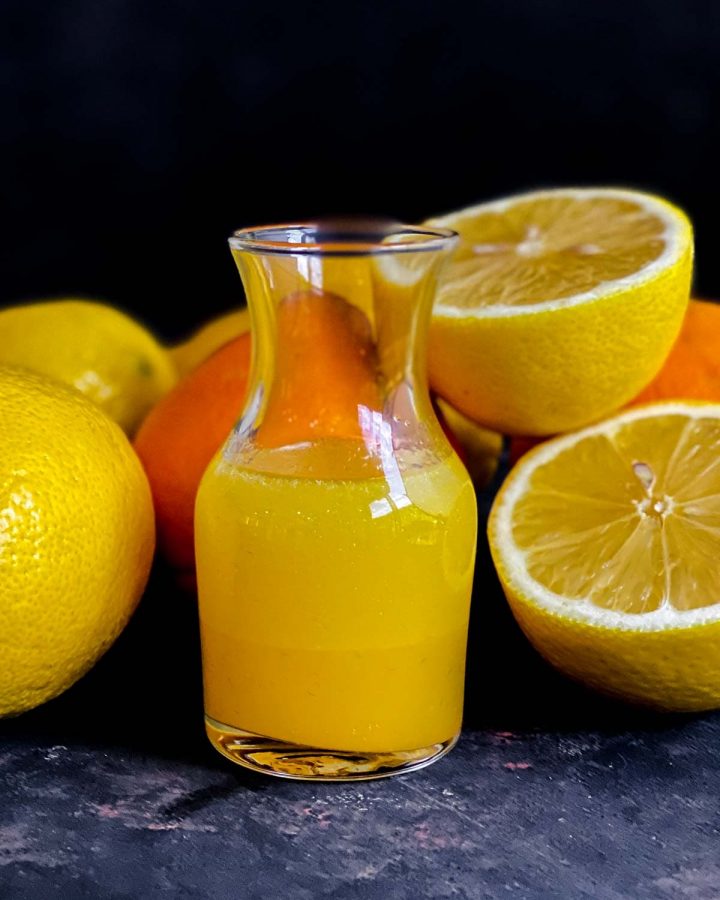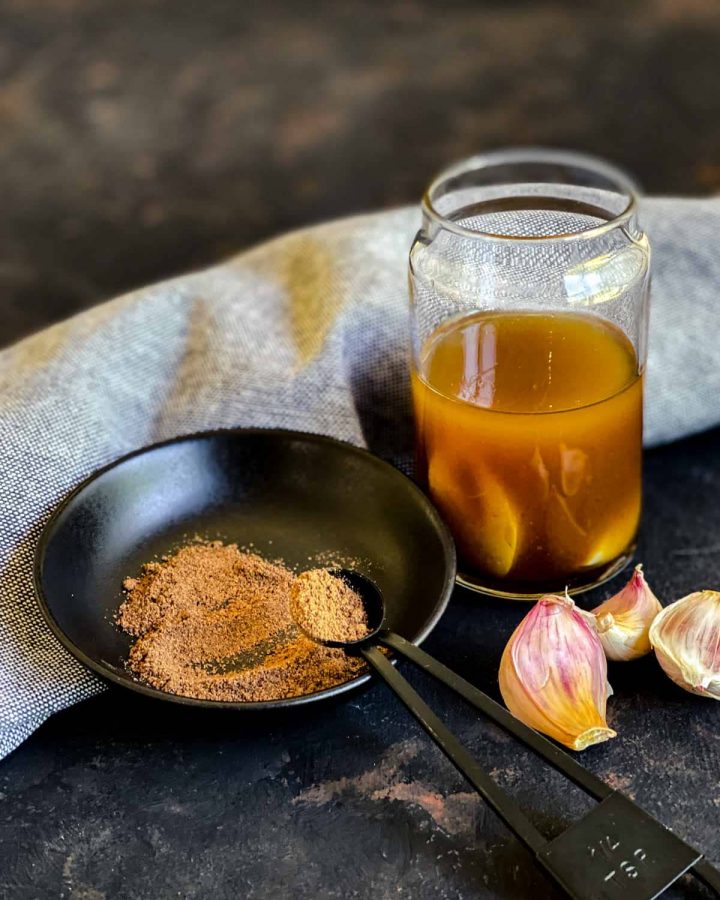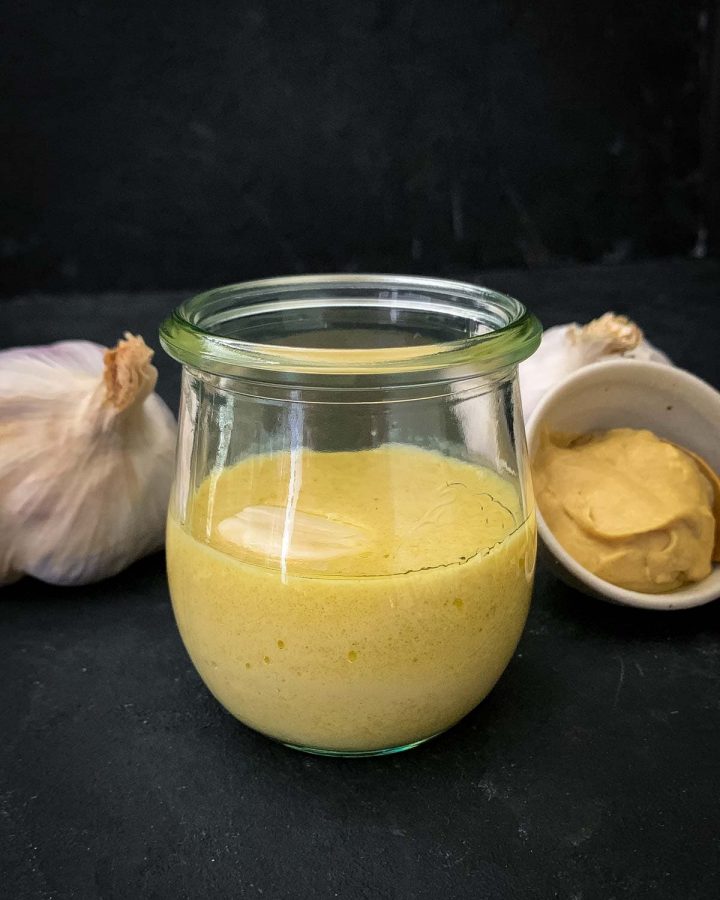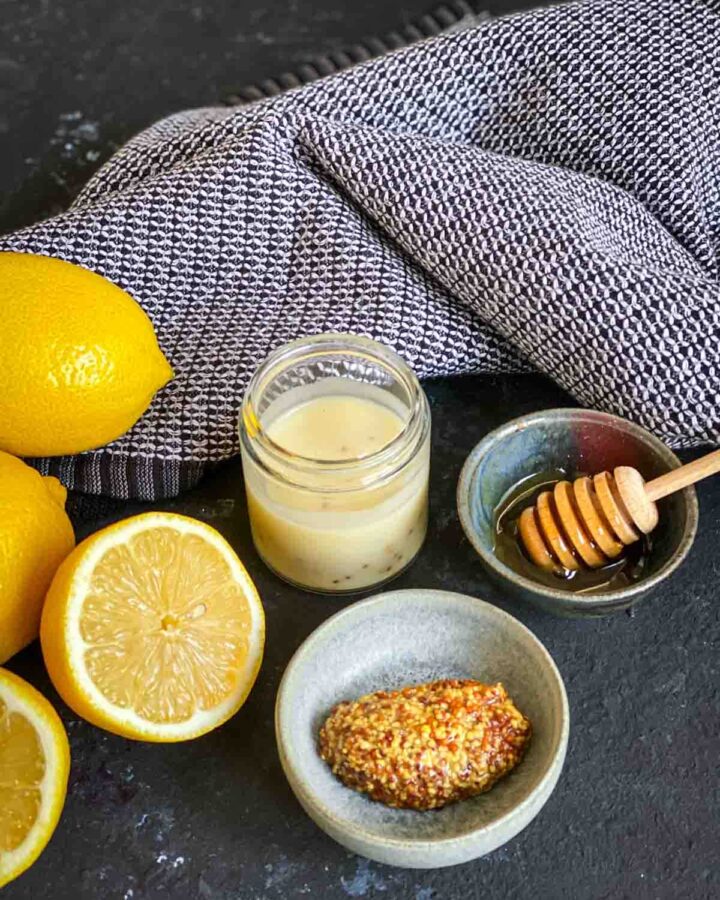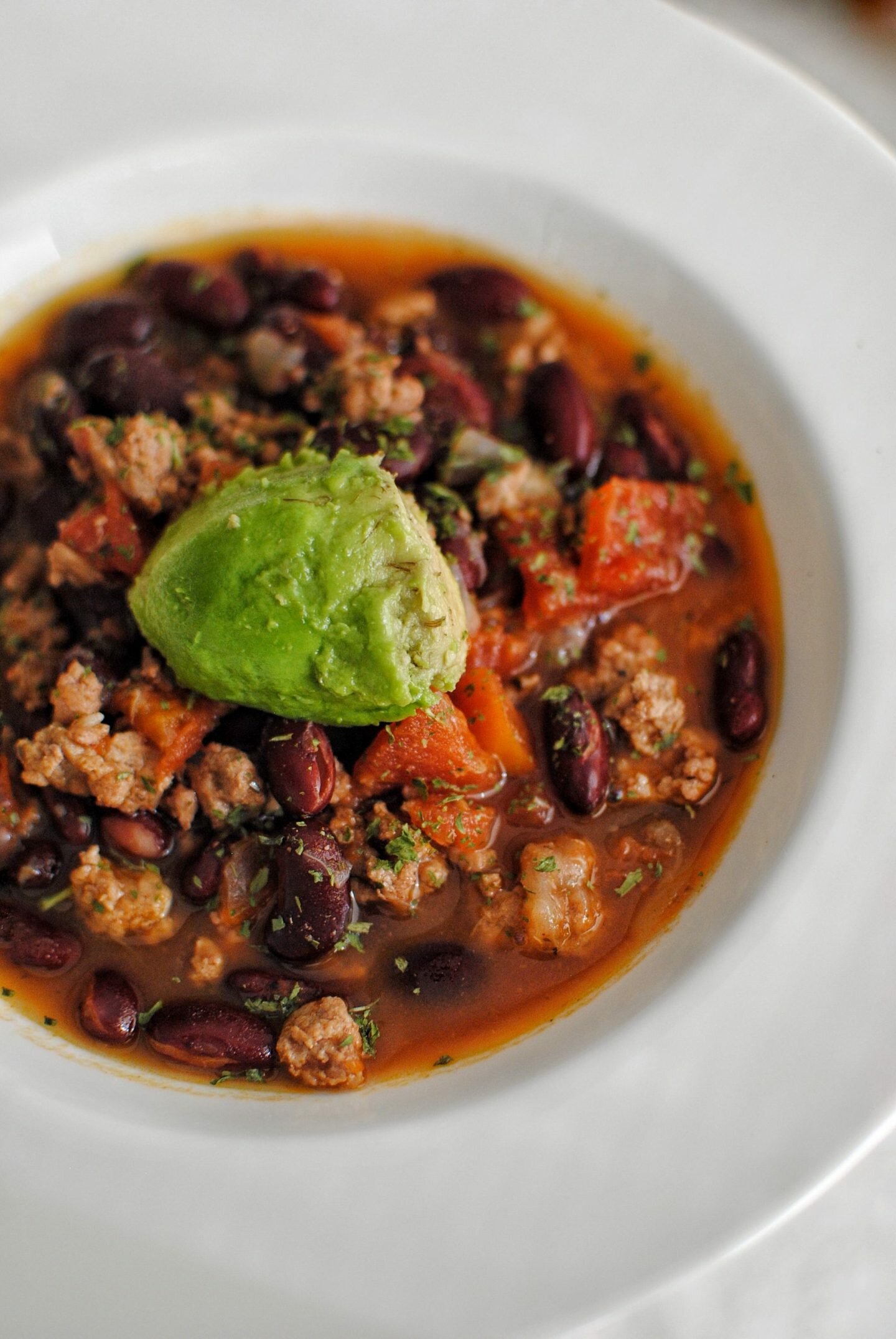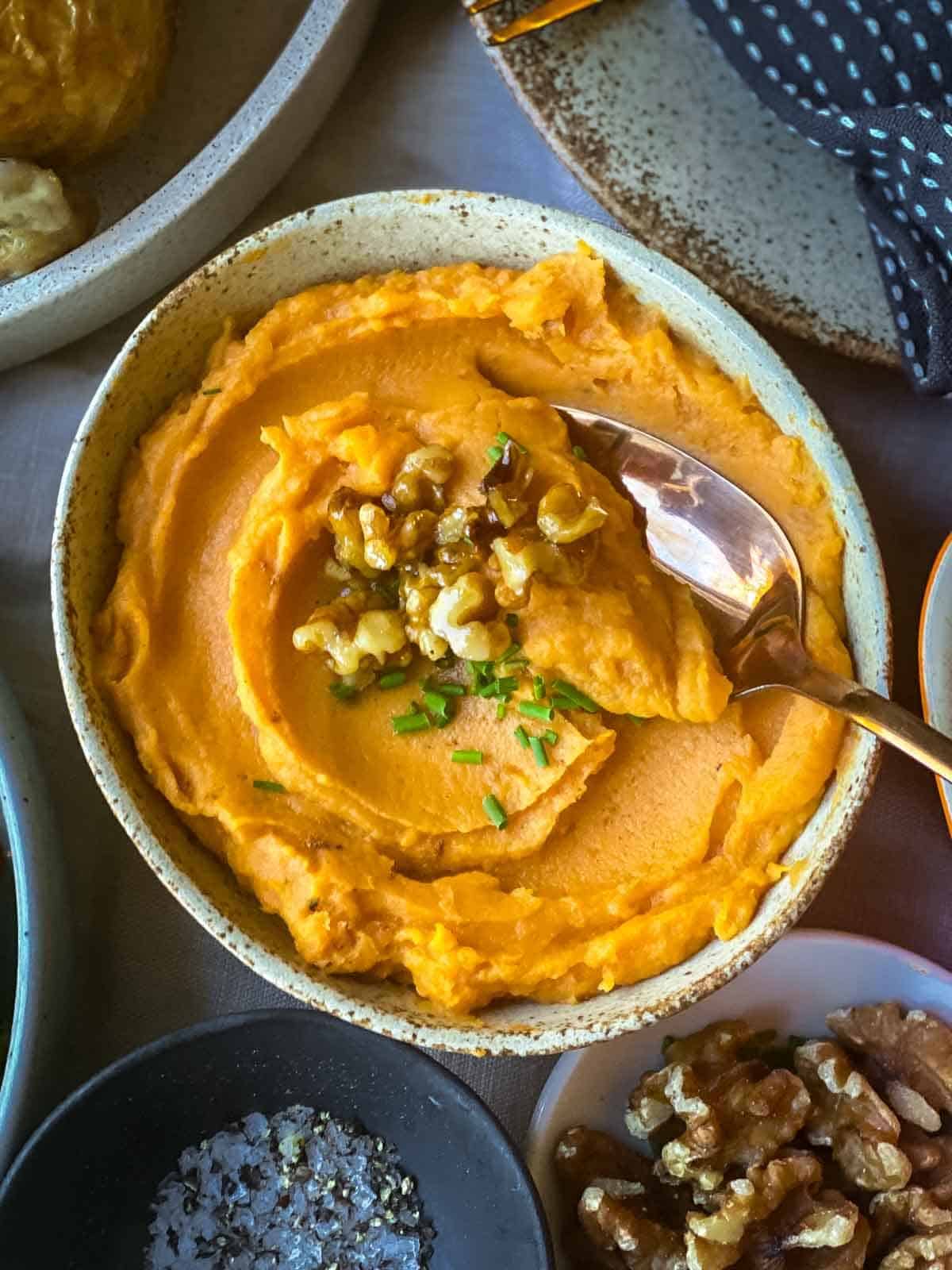Elevate your salads to a whole new level with our homemade chilli tamarind dressing recipe. A burst of tangy, sweet and spicy flavour in every bite. Why Youll Love Our Chilli Tamarind Dressing A super burst of tangy, fruity...
Elevate your salads to a whole new level with our homemade chilli tamarind dressing recipe. A burst of tangy, sweet and spicy flavour in every bite.
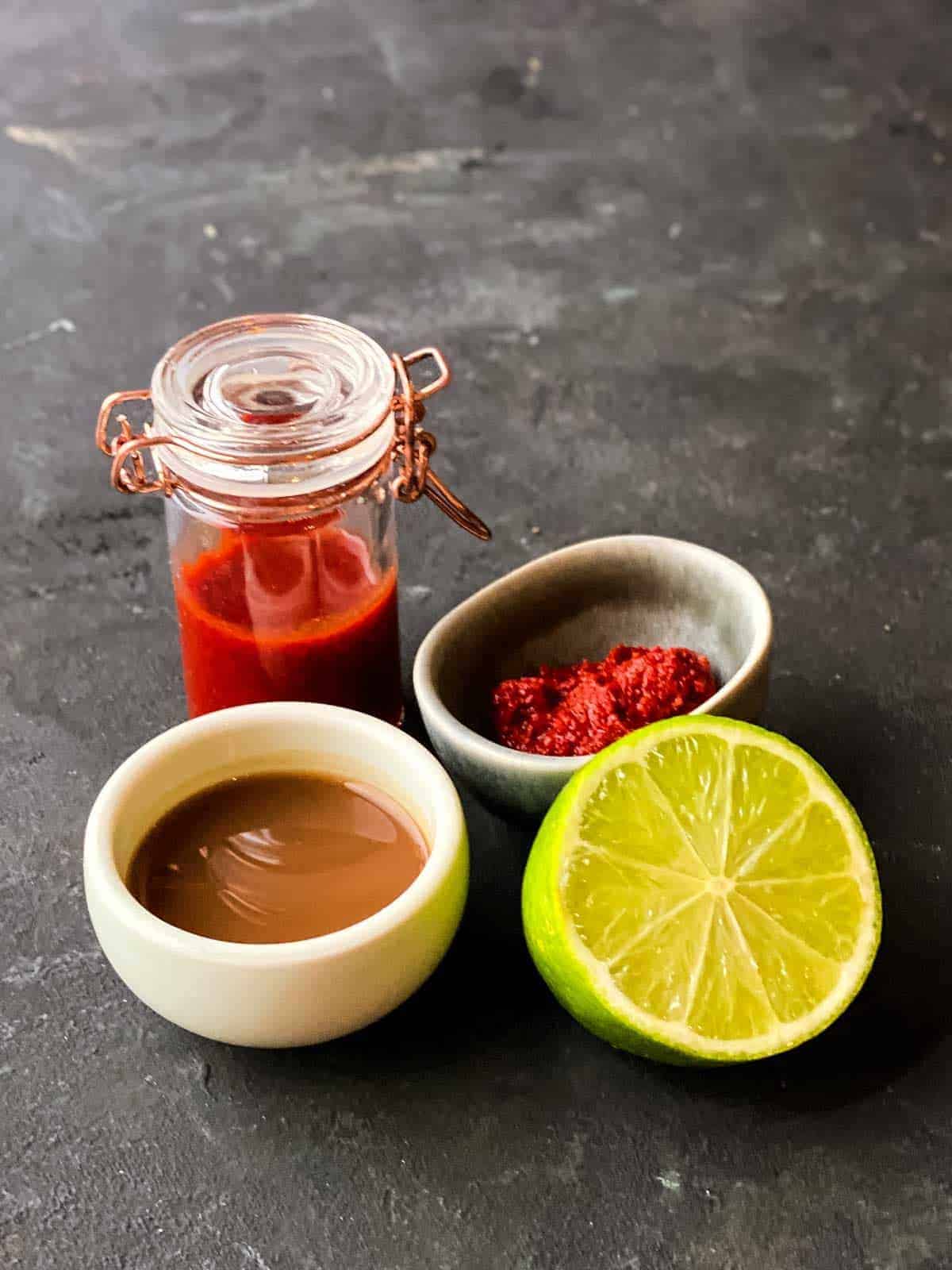 [feast_advanced_jump_to]
[feast_advanced_jump_to]
Why Youll Love Our Chilli Tamarind Dressing
A super burst of tangy, fruity and spicy flavour is how I would describe our chilli tamarind dressing.
Influenced by Thai flavours, I adore the unique sweet, sour flavours of tamarind with lime juice, palm sugar and a hit of chilli. This delicious combination will take your taste buds on an unforgettable journey.
For those not that familiar with tamarind, dont be afraid! It is very easy to use (especially since you can now buy pre-prepared!) and can be used in many different dishes, from sauces, soups, and salad dressings to stews.
I love the versatility of this chilli tamarind dressing because it is fantastic not only with Asian-style salads but can be drizzled on grilled fish, seafood, barbeque chicken or pan-fried tofu. Alternatively, try as a dipping sauce for fried fish or dumplings.
Whether youre a spice enthusiast or someone who appreciates complex flavours, this Thai-style easy tamarind dressing is sure to become a staple in your kitchen.
What is Tamarind?
Tamarind is a fruit grown on trees and comes in a small curvy pod with a brittle shell that encases a sticky sour pulp.
You dont often eat the young green pulp as it is too sour for most, but it can be used in flavouring. The mature, sweet, tangy pulp is most commonly used in various cuisines.
Tamarind is native to Africa and grown in India, Pakistan, South East Asia and the Middle East. Growing up with tamarind in my mums cooking, I always associated it with Southeast Asian cooking. I didnt realise that so many other cultures use it in their cooking!
Tamarind sauce or chutney is a very popular Indian condiment that can be used as a dipping sauce for many Indian street foods or side dishes.
What Does Tamarind Taste Like?
Tamarind has a unique and distinct flavour profile that combines elements of sweetness, tartness and fruitiness. The taste of tamarind can vary depending on its ripeness. Raw tamarind is extremely tart and gets sweeter as the fruit ripens.
The pulps complex sweet-sour taste adds a delicious punch to soups, sauces, dressing, stir-fries, and curries. Like other acidic fruits, tamarind can also help tenderise meat when used in a marinade.
For our chilli tamarind dressing, I added tamarind concentrate in conjunction with the lime juice to create another layer of sweet-sour and fruity aroma.
What Is Tamarind Paste?
It may be a little confusing, but there are actually several names for tamarind paste. It can also be called tamarind concentrate or tamarind puree.
Essentially, tamarind paste is tamarind pulp processed and diluted with water to create a liquid form of tamarind or tamarind juice.
Thai tamarind paste is a convenient way to incorporate tamarinds sour and tangy flavour into recipes without the need to handle whole tamarind pods. You can find tamarind paste/concentrate in plastic containers or jars.

Another form of tamarind you might find at your local Asian grocery store is a block of compressed tamarind pulp. These compacted chunks of tamarind pulp are created by removing the outer husk from tamarind fruit pods and pressing them closely together. They are generally seedless, but the occasional seed will get stuck in the fibrous pulp.
To use it in cooking, you will need to soak the pulp in water and then push the softened pulp through a sieve to separate it from edible pulp from the fibre and any leftover seeds.
What To Do With Leftover Tamarind Paste?

You can use tamarind puree to create your own homemade salad dressing, or try our tamarind nam jim dressing with our Chinese cabbage salad recipe. Alternatively, use it as a glaze like our roasted baby tamarind eggplant side dish.
Ingredients
Ingredients youll need to make this chilli tamarind dressing recipe:
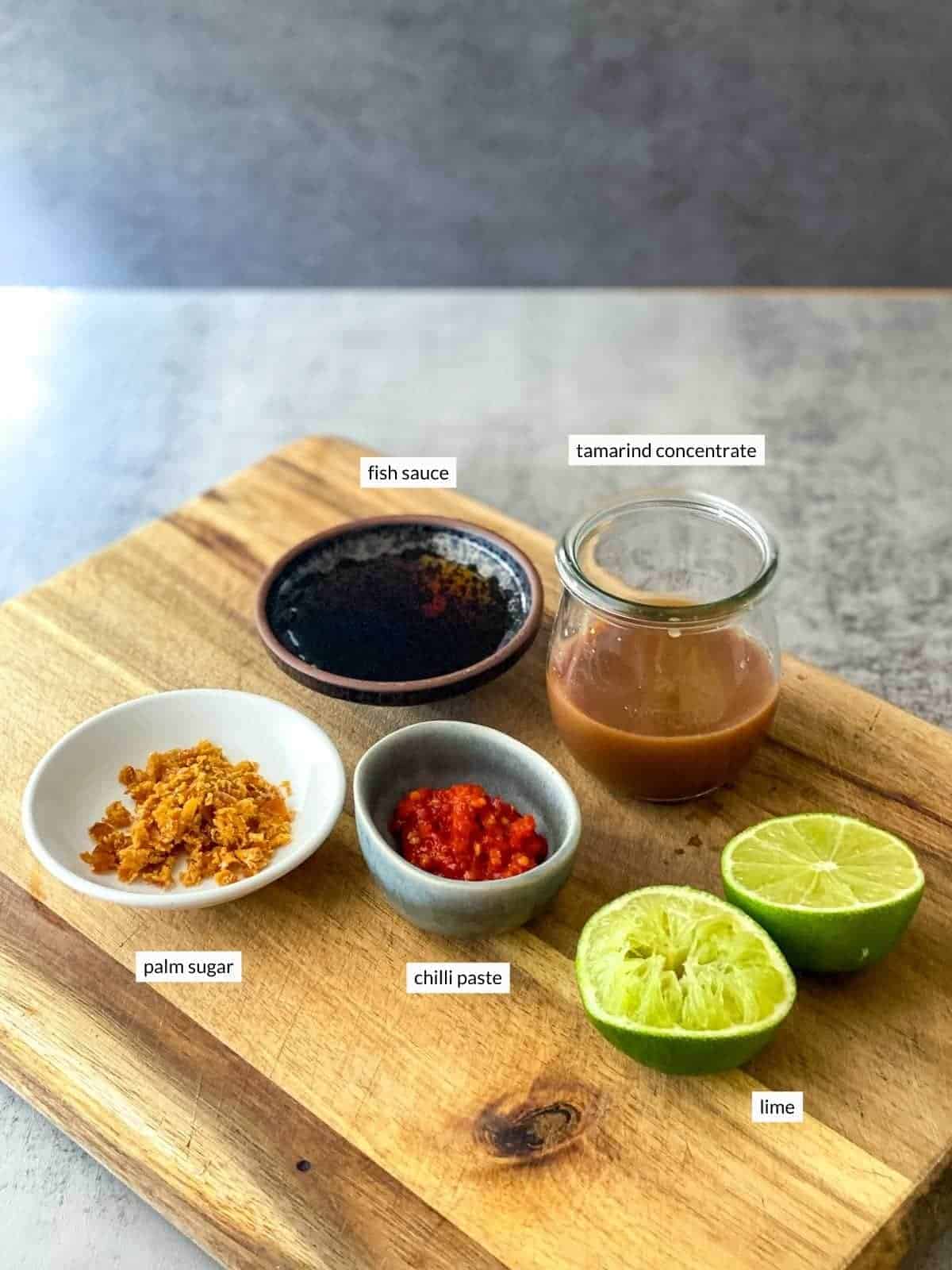
Fish sauce: Good fish sauce makes a big difference. Our go-to brands are Red Boat Fish Sauce or the Thai Fish Sauce by the Squid Brand, which is nice and salty.
Tamarind: Be sure to purchase tamarind paste/concentrate that is from Thailand or Vietnam. The variety of tamarind used in these products is more suited for Thai/Southeast Asian cooking.
Indian tamarind paste is prepared differently with a thicker consistency and has a sweeter flavour suited to Indian cooking. Do not buy tamarind sauce also, as this is a pre-prepared sauce with other ingredients and is unsuitable.
Lime: Lime juice will balance out all the intense flavours in this dressing while diluting the paste to give it a better salad dressing consistency.
Chilli paste: The bright red hues of this tamarind dressing come from the chilli paste. Adjust the heat according to your taste.
Palm sugar: Palm sugar comes in packets in your Asian grocers in small oval blocks or large cylinders. Either is OK to use.
Variations and Substitutions
Substitute for tamarind paste: If you cant find tamarind paste or concentrate, you can buy a block of compressed tamarind pulp and extract your own tamarind juice.
To do this, you need to soak the tamarind pulp in hot water, separate the flesh from any seeds or membrane, squeeze the pulp to create a thicker paste and then strain the pulp to collect the tamarind liquid that can be used in cooking.
Other forms of chilli: You can use any chilli paste similar to Thai Mae Pranom brand, crushed chilli sauce or fresh chilli/peppers. I sometimes even use a harissa paste because I love the bright red colours.
Palm sugar substitute: If you dont have palm sugar, use brown sugar for the sweetener.
Instructions
Step by step instructions for how to make chilli tamarind salad dressing:
Thinly shave palm sugar and add to a small mixing bowl.

Add fish sauce, lime juice, tamarind paste, then mix until the palm sugar dissolves.


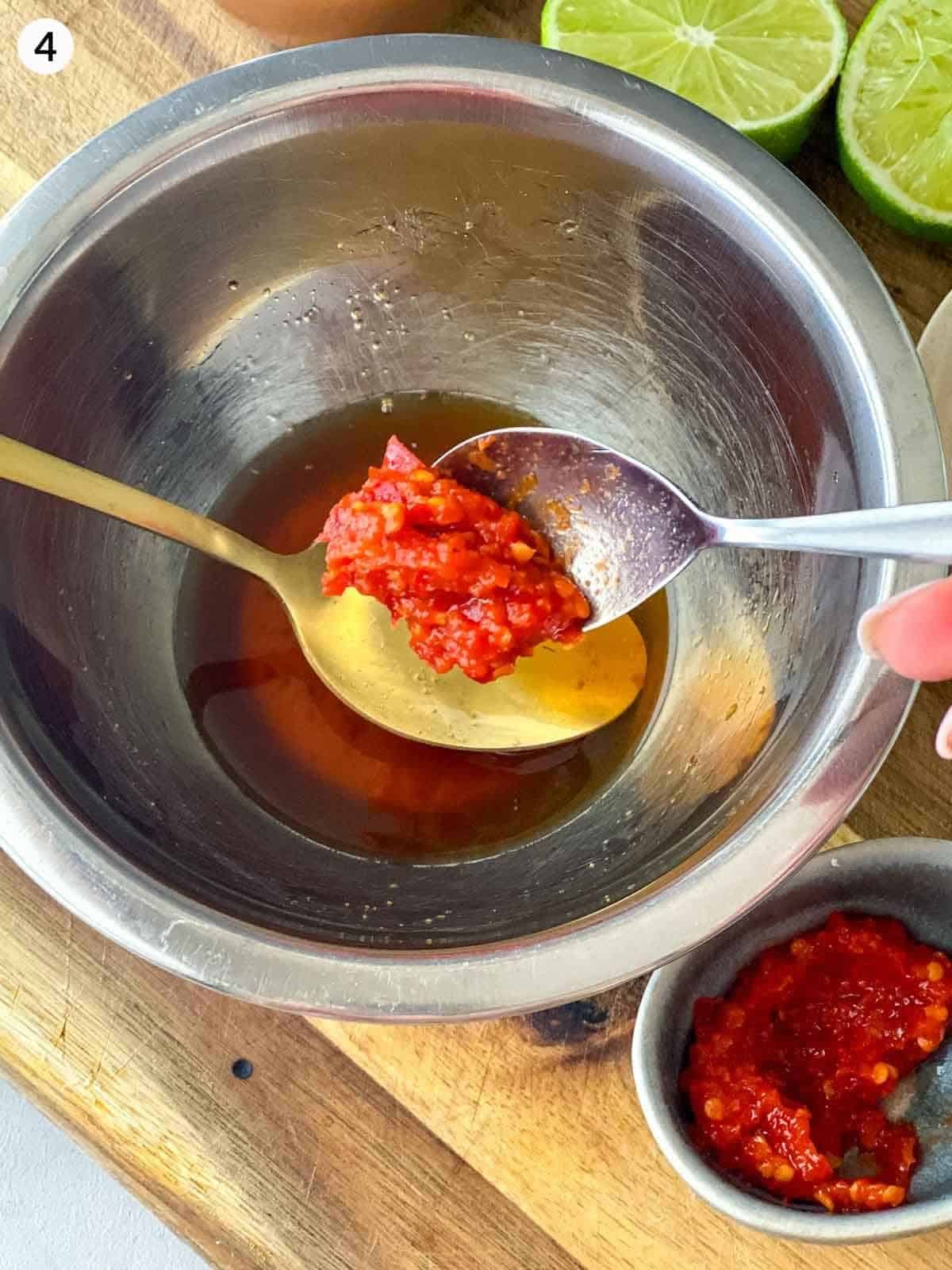
Add chilli paste and stir well to combine.

How to Make This Dressing Perfectly [Expert Tips]
Mix well: It is important to mix well so that the palm sugar is fully dissolved in the dressing.
Taste: Be sure to taste this chilli tamarind dressing to get the right balance suited for you. This is one dressing that needs to be adjusted based on your taste buds, as everyones palate for sourness and spiciness can be quite different.
How to Store
You can store it in an airtight container in the fridge for up to a week. Shake before using.
Best Salad for This Dressing
Thai Prawn Salad with Chilli Tamarind Dressing
Freshly grilled prawns, aromatic Thai herbs and a zesty Chilli Tamarind salad dressing with a good kick of chilli, this Asian-inspired salad is mouth-watering goodness.
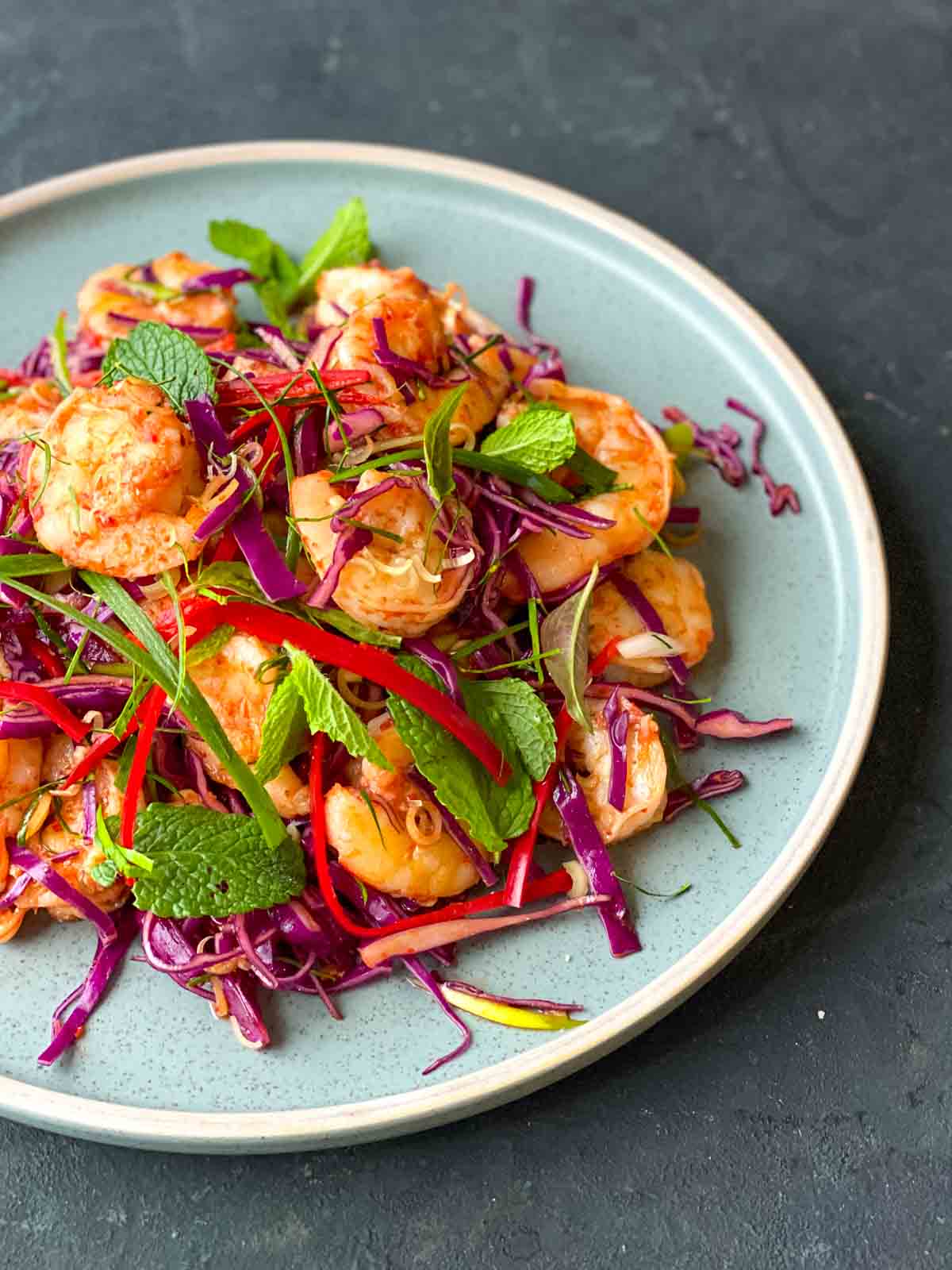
More Salad Dressing Recipes

Recipe

Chilli Tamarind Dressing Recipe
Ingredients
Instructions
Notes
Nutrition
Follow us on Facebook, Pinterest, Instagram and Twitter for the latest updates!
Disclaimer: This site contains affiliate links to products. We may receive a commission for purchases made through these links at no additional cost to you.
The post Chilli Tamarind Dressing Recipe appeared first on The Devil Wears Salad.



